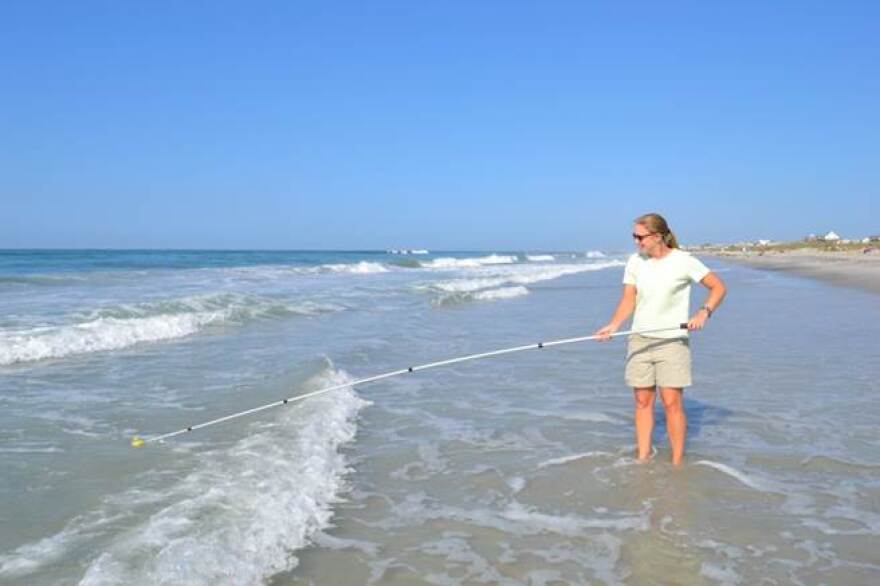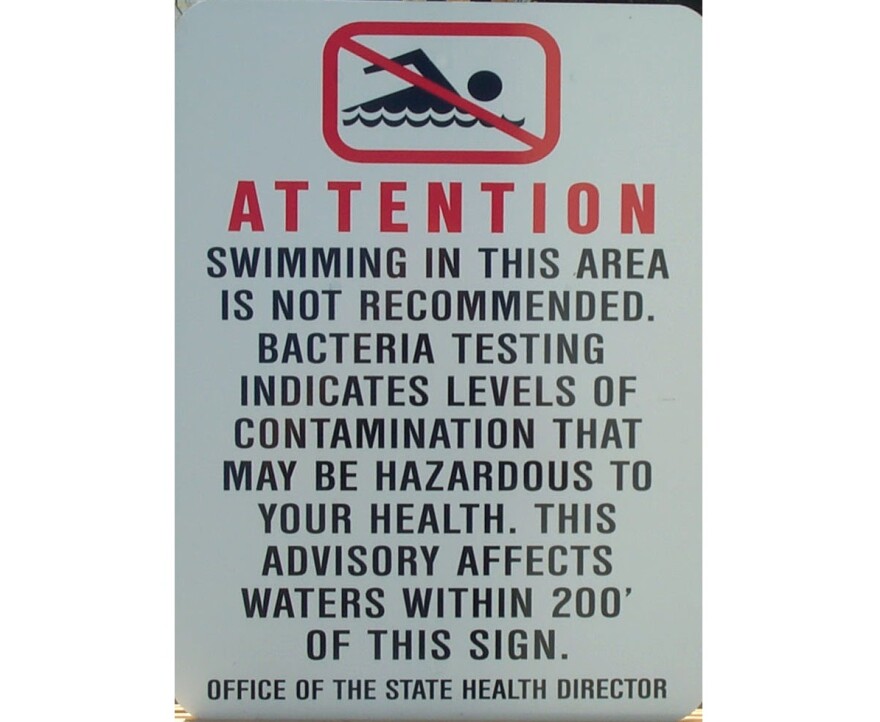How safe is your beach? We talk to the State Recreational Water Quality Program Manager about testing the water at more than 200 locations, from Corolla to Sunset Beach.
When it comes to a trip to the beach, there are hazards you are aware of. Sunburn, getting caught in a rip current, stepping on a shell or piece of glass, or in very rare cases, being bitten by a shark. But there’s also hazards you may not consider, such as water quality.
Fortunately, there is a team of about a dozen scientists with the North Carolina Department of Environment and Natural Resources that make sure your favorite swimming spot is safe. Manager of the Recreational Water Quality Program J.D. Potts says they’ve issued 14 swimming advisories so far this summer, one on Taylor Creek in Beaufort, and at the Harkers Island Bridge.
“Radio Island, here in Beaufort/Morehead area, we’ve had two advisories there this summer. And one time, the advisory sign stayed up for 42 days. That’s somewhat unusual, that’s not always the case.”
Two swimming advisories have been posted at the Newport River access this summer, one lasted for a day and the other advisory lasted two days. Another site at the mouth of Pantego Creek, in Belhaven isn’t under an advisory right now. But earlier this summer, a sign was posted for 55 days.
If contamination persist, county and state Health Directors have the authority to close a beach. But since the program started in 1997, that’s never happened. Potts says there have been several locations along the North Carolina coast that have reoccurring issues every year.
“The sites that we’re having problems with are the same sites that give us problems year after year. We haven’t posted any sites on the ocean side so far this year. But most of the sites that give us problems are Jockey’s Ridge, Colington, which is near Jockey’s Ridge State Park and the Radio Island site.”
Last year, Potts says they had an unusually high number of swimming advisories. On average, 30 to 35 advisories are issued annually. But in 2014, there were 55.

If bacteria levels at a location pose a risk to humans, the State Department of Environment and Natural Resources will issue a swimming alert. This does not involve signage. If a resample at the site exceeds EPA standards, the alert becomes an advisory and a sign is posted at the beach. Potts says they test the water frequently in order to keep the public safe.
“We monitor 204 swimming sites in the coastal area of North Carolina, and that’s a mixture of ocean beaches, sounds and coastal rivers and we categorize those beaches based on usage. We have our ocean sites which are considered tier 1, those are sites that are used daily and we sample those sites weekly.”
Potts says tier 2 and tier 3 sites are usually on the sound side and are monitored every other week.
“When we’re sampling, we wade out to about knee deep, and have a sampling stick that will extend out about 15 feet, and then we collect a sample about a foot deep. We get them on ice. We have a holding time of six hours that the samples have to be back at the lab, and then start the processing. And then 24 hours later we have the results.”
More than half of the sampling locations are ocean beaches, from Corolla to Sunset Beach. The remaining sites include the sounds and coastal rivers like the Neuse and Pamlico. These areas are more prone to bacterial contamination because they are more susceptible to storm water runoff.

“it would mostly be fecal stores that are on the landscape and washing down into the water. So it could include wildlife, pet waste, or if you do have failing septic systems, that could wash into the water and give us some bacteriologic problems.”
People who ignore an advisory and swim in a contaminated area can develop flu-like symptoms, gastroenteritis, stomach ache and vomiting. Potts says children are at a higher risk because they tend to keep their heads underwater.
“I have people that say they’ve become ill once they’ve learned they were swimming at an area near a posted site. But I have not seen a doctor’s report where anyone has gotten sick at one of our beaches.”
There are some steps you can take to minimize your risk of being exposed to contaminated water. Potts suggests not swimming immediately after heavy rainfall. And he urges people to wash thoroughly after a trip to the beach.
You can check the Department of Environment and Natural Resources website for current swimming advisories.




